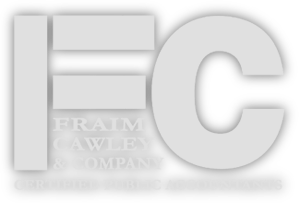“Confess
Confess, confess
Why don’t you confess?
Say yes, say yes
I wish you’d reveal to me”
– “Confess” – Doris Day and Buddy Clark
In my last article I discussed some of the criteria that should be used to determine whether a worker is an independent contractor or an employee. I also considered the difficulties in making the distinction between the two.
Why should business owners be concerned about this? Because the IRS is not particularly pleased that it loses a sizeable amount of money from worker misclassification. The last time a comprehensive study was done was in 1984. In that year the IRS estimated that 3.4 million employees were misclassified at a cost of $1.6 billion. That would be $3.58 billion per year in lost taxes after adjusting for inflation.
(Lest you think that this isn’t big enough for the IRS to care about – given that IRS tax revenues are over $2.5 trillion after all – don’t kid yourself. It may not make that much difference in revenue relatively speaking. But it is on the IRS’s radar screen. Read on.)
Last year I wrote an article outlining a new IRS program targeting small businesses. That same month the Treasury Inspector General for Tax Administration (TIGTA) released a report estimating that 19% of employers continue to misclassify employees as independent contractors.
The IRS’s interest in this issue is only validated by the IRS’s Voluntary Classification Settlement Program (VCSP). The program offers partial tax relief for taxpayers who have not been correctly classifying workers and voluntarily come forward. This sounds good on the surface, but there is an important subtext many people are likely missing.
I’ll illustrate with an example from another IRS program. Several few years ago the IRS gained substantially more access to offshore banking information. In 2009 the IRS started the Offshore Voluntary Disclosure Program (OVDP). The program was so successful it was followed by the 2011 Offshore Voluntary Disclosure Initiative (OVDI) and 2012 Offshore Voluntary Disclosure Program. The three iterations recovered nearly $5 billion in previously uncollected taxes. The programs worked by offering partial tax relief to taxpayers who had not been properly disclosing all of their assets and voluntarily came forward. Sound familiar?
The IRS is looking with increased scrutiny at employers and their tax practices. The more information it gathers, the more studies it commissions, and the more accurately it can assess situations – this is all adding ammo to its clip. This very likely means it is going to increase efforts against employers who are not following the regulations.
This really means that all employers need to take a careful look at their worker classification practices and correct them going forward. Otherwise you risk fighting a losing war with the IRS’s more sophisticated arsenal with an ever more motivated audit team. If you determine that your previous practices have not been correct, the VCSP is very likely your best option.
So how does it work? By participating in the VCSP taxpayers agree to prospectively classify workers as bona fide employees. There a number of requirements for the program:
- “Currently treating their workers (or a class or group of workers) as independent contractors or other nonemployees
- A taxpayer must have consistently treated the workers to be reclassified as independent contractors or other nonemployees, including having filed all required Forms 1099 for the workers to be reclassified under the VCSP for the previous three years to participate.
- Additionally, the taxpayer cannot currently be under employment tax audit by the IRS and the taxpayer cannot be currently under audit concerning the classification of the workers by the Department of Labor or by a state government agency.
If the taxpayer meets all of these requirements and treats the workers as employees going forward, the IRS offers the following benefits:
- “Pay 10 percent of the employment tax liability that would have been due on compensation paid to the workers for the most recent tax year, determined under the reduced rates of section 3509(a) of the Internal Revenue Code.
- Not be liable for any interest and penalties on the amount; and
- Not be subject to an employment tax audit with respect to the worker classification of the workers being reclassified under the VCSP for prior years.”
Given the potential alternatives, this is a very generous arrangement. If you are unsure if you have been correctly classifying your workers, it would be advisable to have a review of your unique situation to determine the best course of action.
And let’s not look at this murky and potentially dangerous situation as an isolated incident. The examples above highlight that this is not the case at all. Tax law is complicated and ever-changing. Proper accounting and effective financial analysis can give you the tools you need to help your business succeed. Give me a call so we can discuss and set up these strategies.
IRS Circular 230 Notice: To ensure compliance with requirements imposed by the IRS, we inform you that any federal tax advice contained in this communication (including any attachments) is not intended or written to be used, and cannot be used, for the purpose of avoiding penalties under the Internal Revenue Code.




